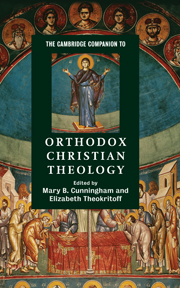Book contents
- Frontmatter
- Who are the Orthodox Christians? A historical introduction
- Part I Doctrine and Tradition
- Part II Contemporary Orthodox Theology: its Formation and Character
- 11 Church Fathers and the shaping of Orthodox theology
- 12 The patristic revival and its protagonists
- 13 The Russian religious revival and its theological legacy
- 14 Some key themes and figures in Greektheological thought
- 15 Personhood and its exponents in twentieth-century Orthodox theology
- 16 The witness of the Church in a pluralistic world: theological renaissance in the Church of Antioch
- 17 Russian theology after totalitarianism
- 18 Orthodox Christianity in the West: the ecumenical challenge
- Glossary
- Bibliography
- Index
- Series list
13 - The Russian religious revival and its theological legacy
from Part II - Contemporary Orthodox Theology: its Formation and Character
Published online by Cambridge University Press: 28 March 2009
- Frontmatter
- Who are the Orthodox Christians? A historical introduction
- Part I Doctrine and Tradition
- Part II Contemporary Orthodox Theology: its Formation and Character
- 11 Church Fathers and the shaping of Orthodox theology
- 12 The patristic revival and its protagonists
- 13 The Russian religious revival and its theological legacy
- 14 Some key themes and figures in Greektheological thought
- 15 Personhood and its exponents in twentieth-century Orthodox theology
- 16 The witness of the Church in a pluralistic world: theological renaissance in the Church of Antioch
- 17 Russian theology after totalitarianism
- 18 Orthodox Christianity in the West: the ecumenical challenge
- Glossary
- Bibliography
- Index
- Series list
Summary
Over forty years ago Nicolas Zernov, himself a product of the religious revival of the Russian emigration, produced a still important overview of its personalities and accomplishments. He called it a 'renaissance', and this it truly was - a wave that rose and broke over several generations, bringing theological creativity of diverse kinds, liturgical renewal and a profound rediscovery of the Church and Christian life. Yet this renaissance was anything but a purely internal event, for it was expressed in the desire to be engaged with the culture and society of the time, and in the commitment to seek for unity in the Church. The Russians' discovery of so many other brothers and sisters in the Lord from the Western Churches was one of the main impulses for this ecumenical dimension.
It has been customary to connect the work of the thinkers of this renewal with their enforced flight from the Russian revolution and their subsequent encounter with the Catholic and Protestant clergy and laity who welcomed them. However, this overlooks the reality that many were already producing a renewal of religious thought and churchly practice before the revolution. In the nineteenth century, thinkers such as Khomiakov, Metropolitan St Filaret (Drozhdov) of Moscow, Soloviev and Bukharev had begun to write about the conciliar or 'sobornal' nature of the Church, to probe the meaning of God's presence in the world in the Incarnation - the 'humanity of God' (Bogochelovechestvo) and to argue for dialogue between the Church and modern culture.
- Type
- Chapter
- Information
- The Cambridge Companion to Orthodox Christian Theology , pp. 203 - 217Publisher: Cambridge University PressPrint publication year: 2008
- 1
- Cited by



